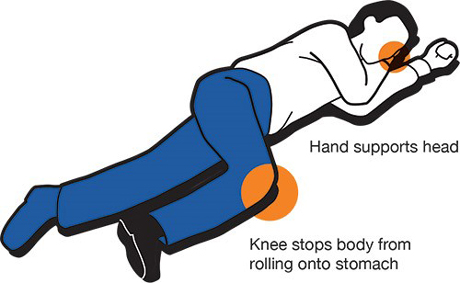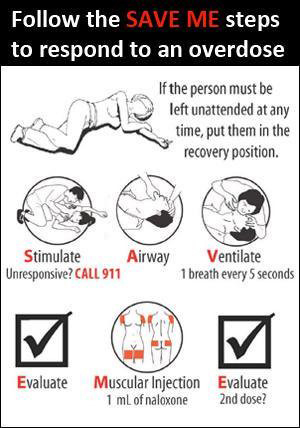Opioids (downers), including Fentanyl, are nervous system depressants that result in a lower heart rate, drowsiness, slow or slurred speech, small pupils, and a slower breathing rate. This can lead to an overdose.
Factors that can increase your risk of opioid overdose:
- mixing drugs
- quantity (amount) and potency (strength)
- other medications
- tolerance for the drug you are taking
- your overall health
- routes of administration (how you take the drug)
Symptoms of an opioid overdose:
- unresponsive
- breathing is slow (less than 12 breaths a minute), erratic, or there are no breaths at all
- body is very limp
- fingernails and lips are blue
- skin is cold and/or clammy
- pupils are tiny
- vomiting
- choking or snore-like gurgling noises
- heartbeat is slow, erratic, or not there at all
- seizure
- loss of consciousness
Overdose prevention:
- don’t use while alone
- use safer routes
- do a test hit first
- know the signs and symptoms of an overdose
- don’t mix drugs
- carry naloxone and learn rescue breathing
- know where to find community support and resources
If you ever have to leave someone alone that you think might be overdosing, put them in the recovery position and call 911.

How to respond to an overdose:

-
Stimulate: Sternal rub. Make a fist and place your knuckles firmly on the centre of the chest, then rub up and down. If the person is still unresponsive, call 911.
-
Airway: Are they breathing? No – open their airway and begin rescue breathing.
-
Ventilate: Give 1 breath every 5 seconds for 2 minutes. Their chest should rise with each breath.
-
Evaluate: Are there any changes after 2 minutes? Are they responsive or adequately breathing? No – inject naloxone from a naloxone kit.
- AdMinister Naloxone (Muscular Injection):
- Expose the thigh as much as possible, divide into thirds, and plan to inject into the middle section.
- Clean the injection area with an alcohol swab.
- Take the cap off the vial and clean the vial with an alcohol swab.
- Insert the needle through the rubber stopper of the vial and inject 1 mL of air into the vial.
- Draw up the entire contents of the vial (1 mL of liquid) and remove air bubbles if needed from the syringe.
- Hold the needle like a dart and insert it into middle of the thigh at 90°.
- Push down on the plunger slowly and steadily.
- Remove the needle at 90°, engage the safety mechanism, and dispose safely (back into the kit container).
-
Evaluate again:
- Naloxone takes effect within 2 to 5 minutes.
- After giving the first dose, unless the person is awake and breathing NORMALLY on their own, continue rescue breathing or CPR with compressions for another 2 minutes.
- If they are still not responsive and breathing adequately on their own, give another dose of naloxone.
- Continue rescue breathing or CPR with compressions until they are breathing on their own or until help arrives.
- Stay with the person until EMS arrives.
Where can I get a naloxone kit?
Take home naloxone kits are available at pharmacies, walk-in clinics, and other community agencies. You’ll be trained on how to use it, and how to respond to an overdose.
What do I do if I need to replace the kit?
There is a
new form that you can complete and submit anonymously. You can also print it off in
pdf format and submit it to naloxone.kit@ahs.ca.
For 24/7 nurse advice and general health information call Health Link at 811.
